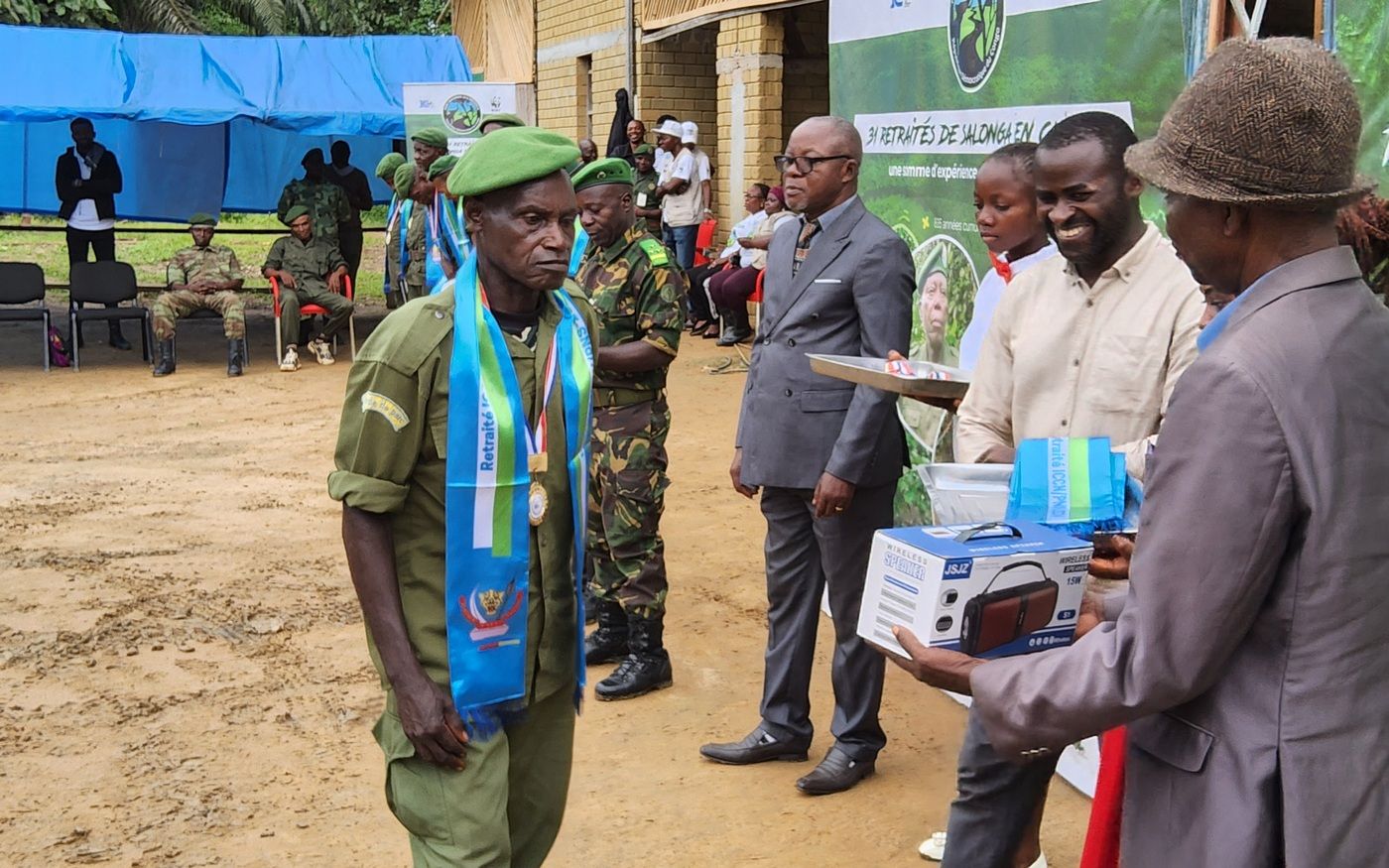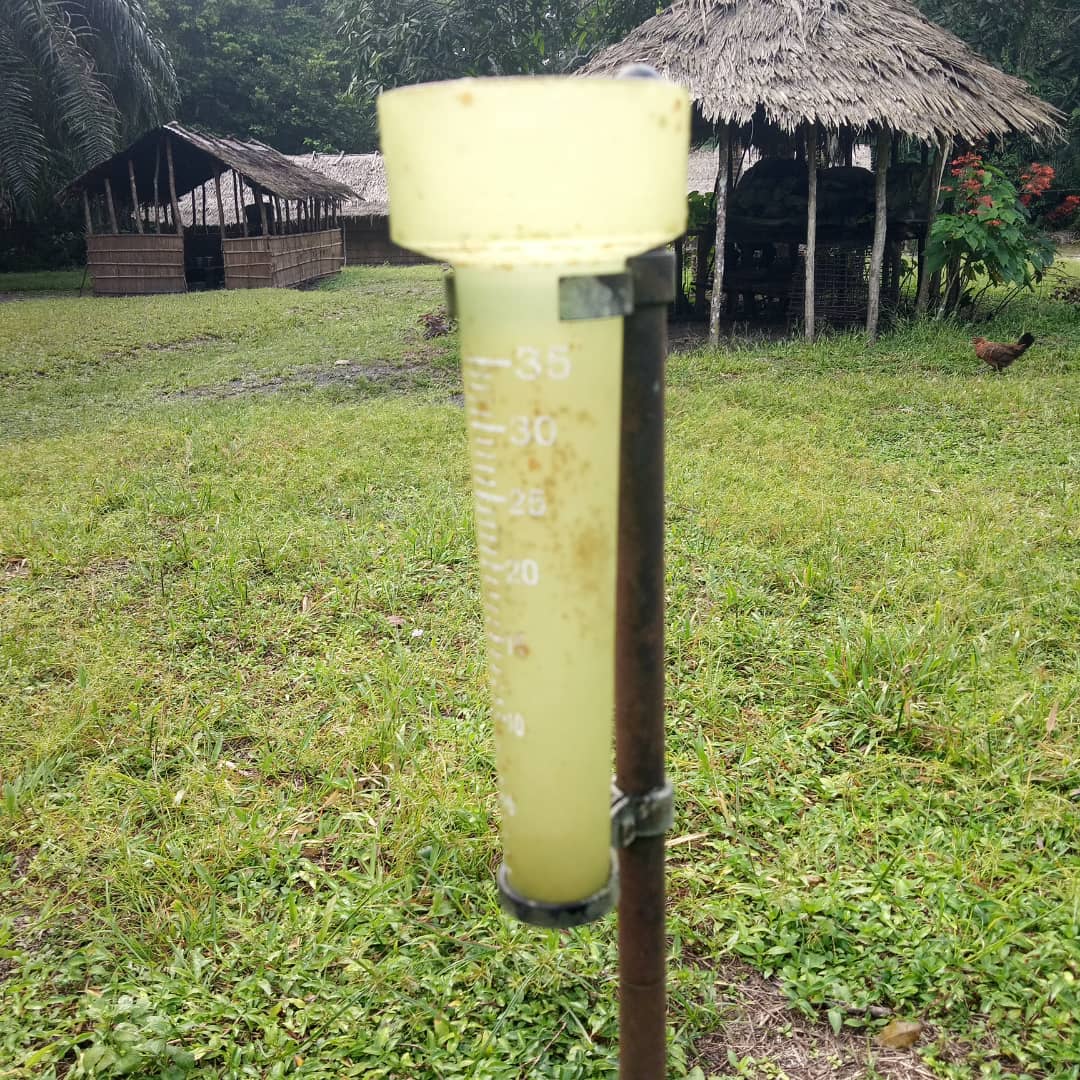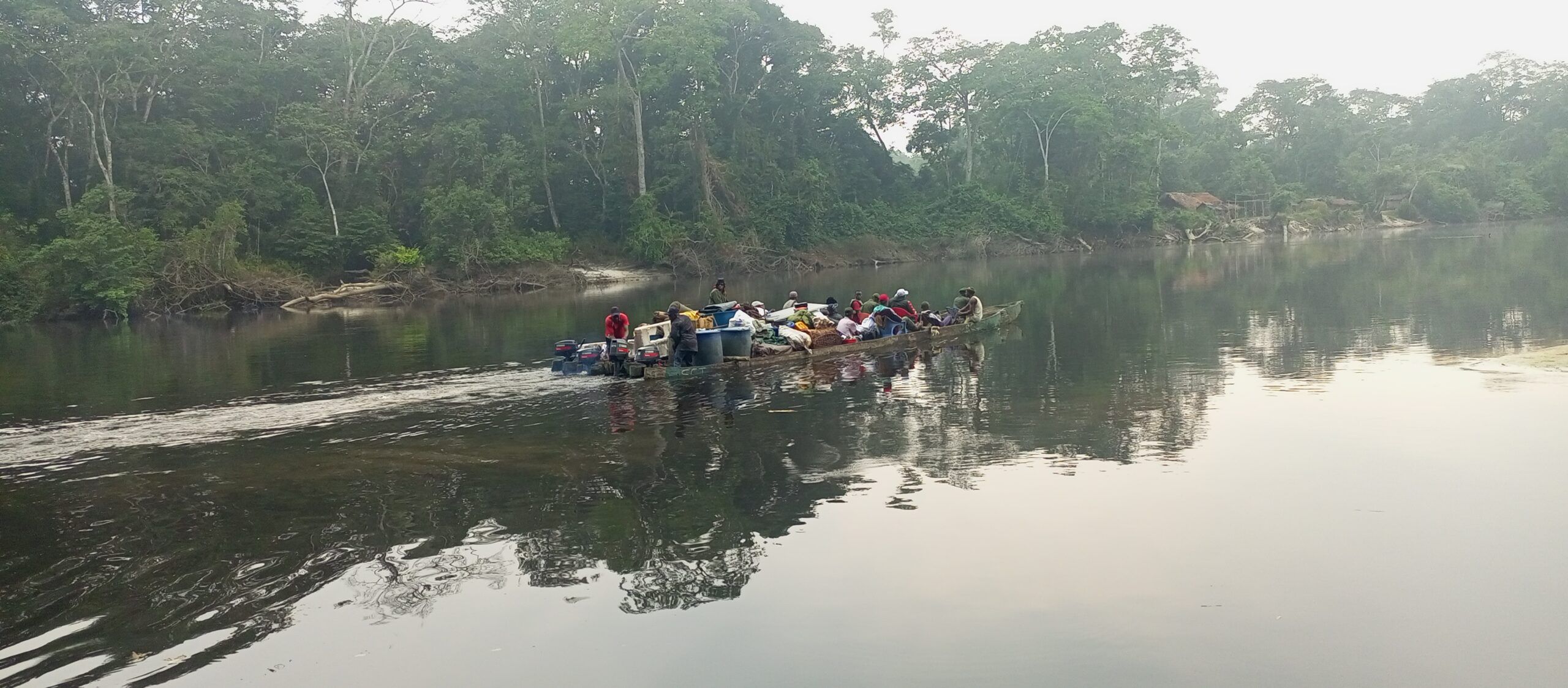The protection of national parks in Africa has many constraints and is often carried out with insufficient staff. The vastness of the Salonga Park and its physical environment, largely made up of flooded forests, make fight against poaching even more difficult.
Different types of poachers
Active poachers in Salonga can be divided into two broad categories: (1) local poachers from surrounding villages who primarily hunt small mammals for family consumption or local sale; and (2) poachers from outside Salonga who operate with significant means such as weapons and ammunition of war. They work in organized networks and have powerful support.
The most destructive poaching is the one which targets elephants for their ivory.
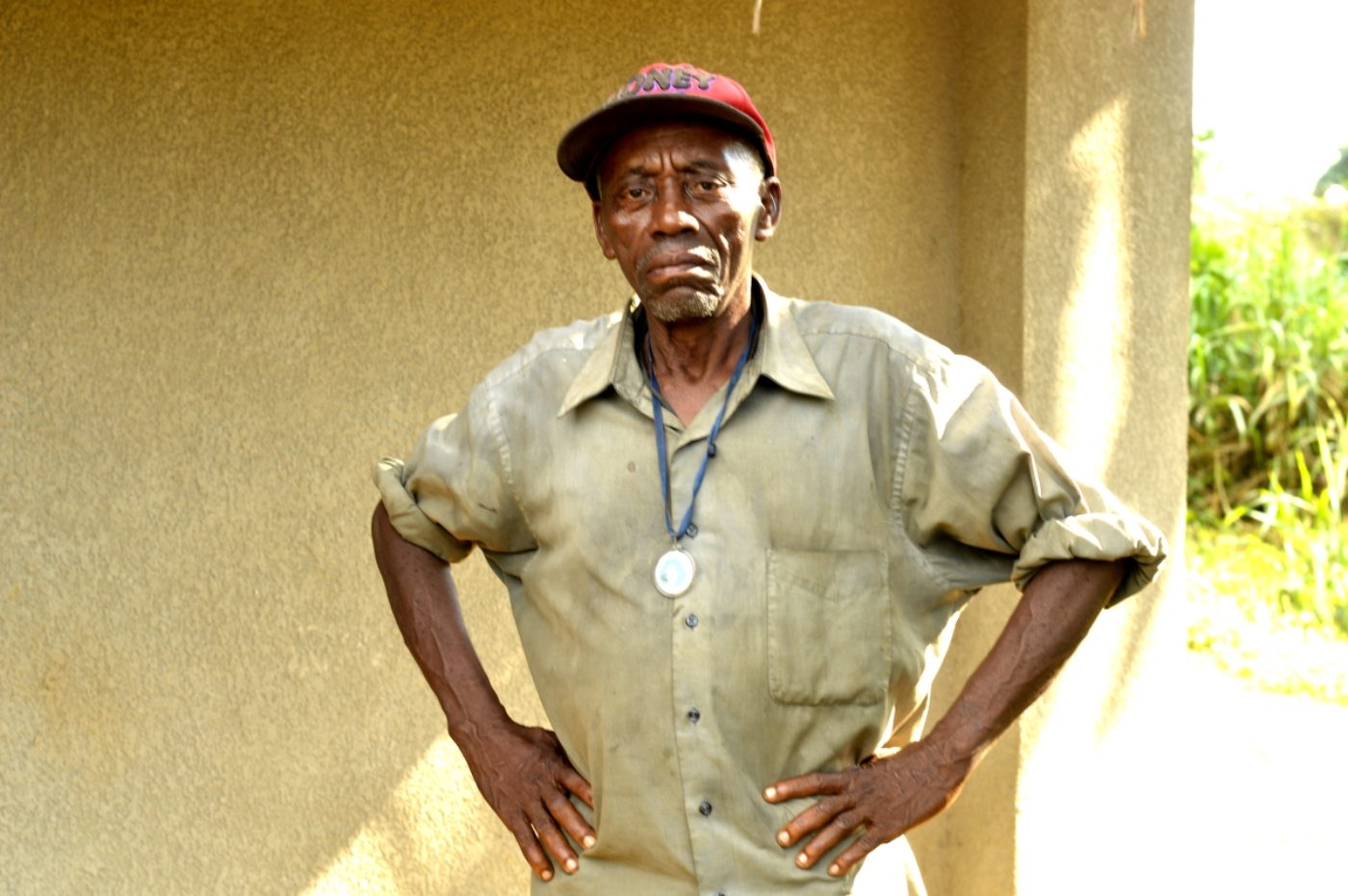
Bokele Loko Lolongo at Salonga, former ICCN Ranger National Park
Bokele Loko Lolongo, a former guard now retired, gives us his memories of the days when he was still active. Bokele is now 73 years old. He had been hired as an eco-guard in 1971, a year after the creation of Salonga National Park and he retired in 2011.
“The poachers we met during the 1970s were villagers who hunted animals for local consumption. It was around the end of the 1970s and the beginning of the 1980s that poachers armed with heavy weapons and FAL assault rifles appeared. This new type of poacher started to kill elephants en masse.”
Emergence of a new type of poaching
“The poachers we met during the 1970s were villagers who hunted animals for local consumption. It was around the end of the 1970s and the beginning of the 1980s that poachers armed with heavy weapons and FAL assault rifles appeared. This new type of poacher started to kill elephants en masse.”
Bokele mentions the techniques he and his comrades used to stop poachers: “We acted mainly as a result of information obtained from the population and avoided the use of force. Thus cunning was often used to get poachers to let their guard down. “
Does he feel that the animals have decreased in comparison with the time he started his service, forty years ago? It is difficult for him to get an exact idea: the park is very big and very dense. But there is one thing he confides with some sadness: “Elephants were killed in large numbers in the 1980s and 1990s. In Isolu, for example, poachers armed with heavy weapons could shoot down up to 30 elephants in one day.”
Although Bokele admits that his age is now advanced (even though he is in relatively good physical shape), he says that if he was a little younger, he would willingly resume service. “I have it in my blood. Today, I’m happy to provide advice to the youngest about the work of a park ranger when I have the opportunity. One of my sons is enlisted in the new park rangers units but he is not registered yet. I explain to my son that we must stop them without brutality, refuse corruption, and treat apprehended poachers with respect. However, when you transport a poacher you have arrested in a pirogue, you must be careful and handcuff him otherwise he may try to capsize the boat to escape by swimming!”.
»Elephants were killed in large numbers in the 1980s and 1990s. Poachers armed with heavy weapons could shoot down up to 30 elephants in one day.«
Winning communities’ hearts
Former conservation officer Bofenda Batumba Nkoy is another veteran who shares his memories. Bofenda began his career in the national parks of the DRC in 1973. After working in parks in the east of the country he arrived at Salonga in 1990 where he remained for 13 years until his retirement.
He explains that the collaboration with the local population is essential in the fight against poaching, because it is the communities where poachers come from. “When I arrived at the Salonga, we heard here and there: Bofenda is the one who forbids us to eat meat and fish! What are we going to eat now? We then began to win the hearts of the youngest. I explained to them that the park could arouse the interest of tourists like the national parks in the east where I had worked for a long time. It is a message that the young people explained to their parents.”
The work was sometimes dangerous. He was shot twice. “The poaching during the 90s was carried out by violent men armed with heavy guns. We could not do much with our more modest weapons.” This was also the time when elephant numbers dropped quickly and Salonga was added to the UNESCO World Heritage in Danger List.
Today retired Bofenda lives in Boende, the capital of the province of Tshuapa, a hundred kilometers north of the park. He feels he has fulfilled his duty, but still has a strong desire for the park to have more staff and equipment for its protection.
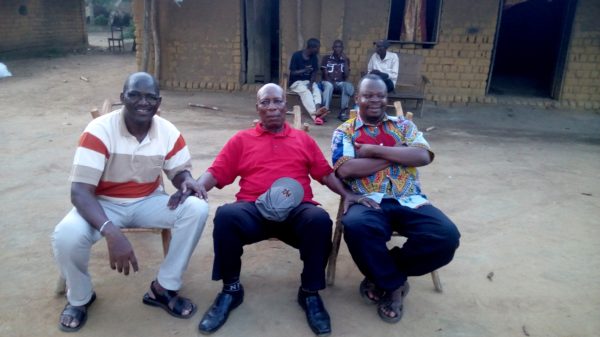
The former ICCN Sector chief Bofenda Batumba Nkoy (center) at his home in Boende with the director of Salonga National Park (left) and Salonga National Park's Biomonitoring Officer (right).

